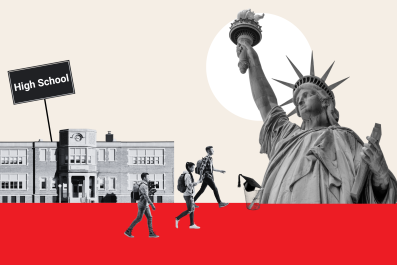Interest rates for federal student loans could increase by roughly 1 percentage point in the next school year, and this bump might have some severe consequences on some monthly payments.
Read more: How to Consolidate Student Loans
Every year, the U.S. Department of Education revises its annual interest rates for federal student loans. This percentage rate varies based on the 10-year Treasury note, which has been growing as inflation remains high and the Federal Reserve keeps rates steady.
Based on this week's auction of the 10-year Treasury note, experts are predicting the interest rates for new undergraduate loans in the 2024-2025 school year would be set at 6.5 percent, a significant jump from the 5.5 percent last year.
"This is a fairly big jump," higher education expert Mark Kantrowitz told CNBC.
Graduate students could see their interest rate spike by one percentage point as well, to 8 percent from the 7 percent they face now.
Despite those possible hikes, those who could be getting the worst end of the deal are the parent and graduate student PLUS loan holders, who will also see a one percentage point interest rate rise to 9 percent.
Read more: Compare Rates for Graduate Student Loans
"A one percent increase may not sound like much, but it's actually a fairly sizable one, especially for new undergraduate students who are having to look at taking out more debt to fund increasing college costs," Alex Beene, a financial literacy instructor at the University of Tennessee at Martin, told Newsweek. "That one percent could add hundreds or even thousands of dollars over the lifetime of the student loan based on the size of the loan they need, and the issue is most students don't consider this at the time of applying for the loan."
The new rates would go into effect on July 1, and if passed, there would be no way to avoid the new rates for the next academic year. The federal government requires all loans for the 2024-2025 year to be taken after July 1.
Private loans are a separate entity and the federal student loan interest rates would not apply to them for next school year.
Students or parents considering taking on a loan for the next school year should take the time to calculate how this could affect the total cost of education, Beene said.
"Odds are it's greater than you're expecting and may make you reassess your decision," Beene said.
For those who take out $10,000 in new undergraduate loans next year at the projected 6.5 percent rate, that's an extra $1,100 more in interest paid over a 10-year repayment period. But if you took on a much higher loan, that number could easily skyrocket.
Read more: Best Student Loan Rates
"The root cause here is the Federal Reserve's aggressive rate hiking to get inflation under control," Michael Ryan, a finance expert and the founder of michaelryanmoney.com, told Newsweek. "As their benchmark rate goes up, rates on things like mortgages, auto loans and student debt inevitably follow suit since they're tied to Treasury yields."
Students and families taking out new federal loans will likely feel the brunt of the percentage point increase, while those with existing fixed-rate debt "dodged a bullet," Ryan said.
Disclaimer: The copyright of this article belongs to the original author. Reposting this article is solely for the purpose of information dissemination and does not constitute any investment advice. If there is any infringement, please contact us immediately. We will make corrections or deletions as necessary. Thank you.




